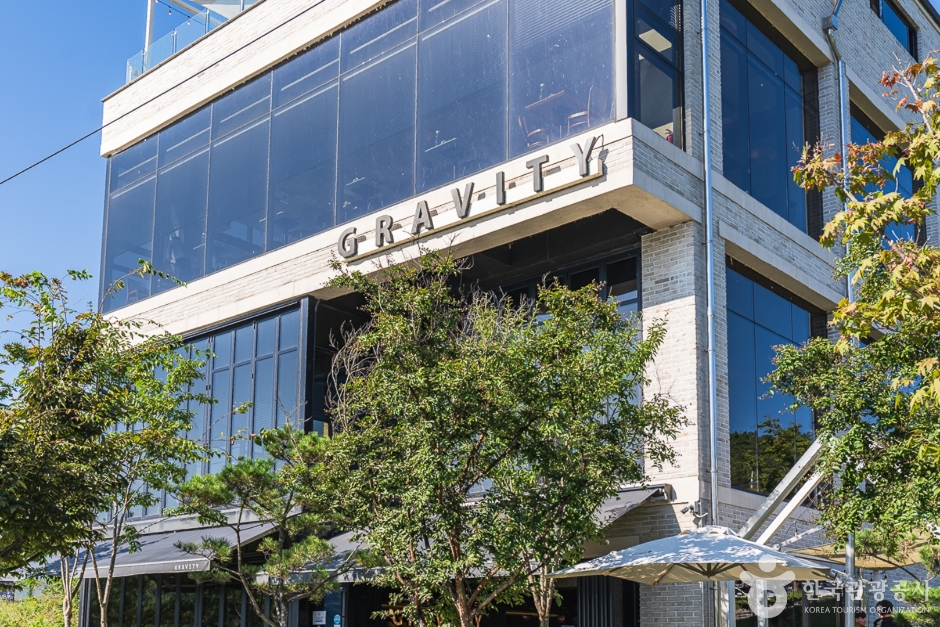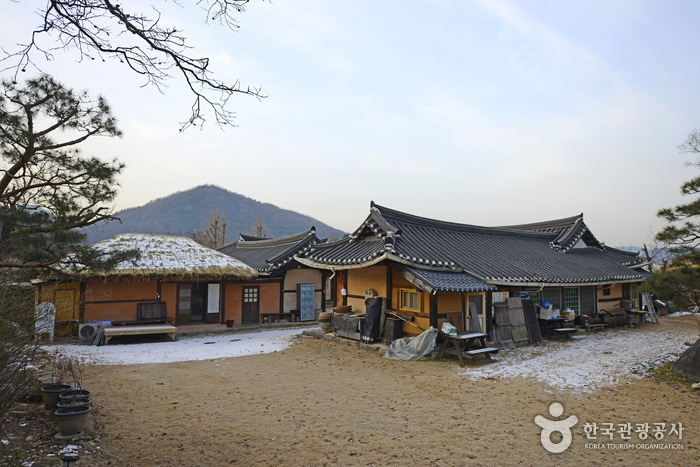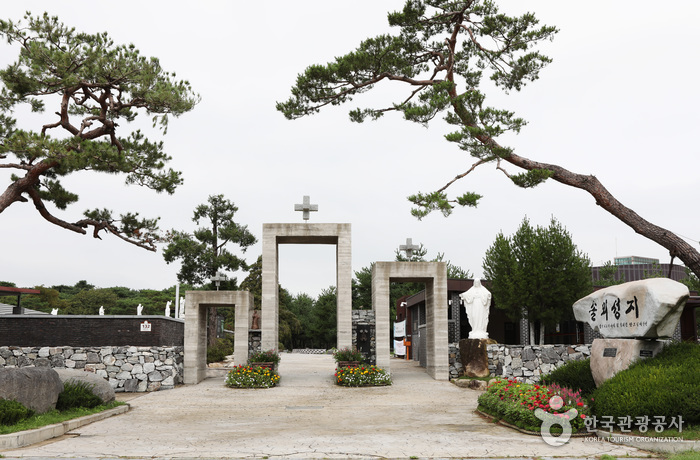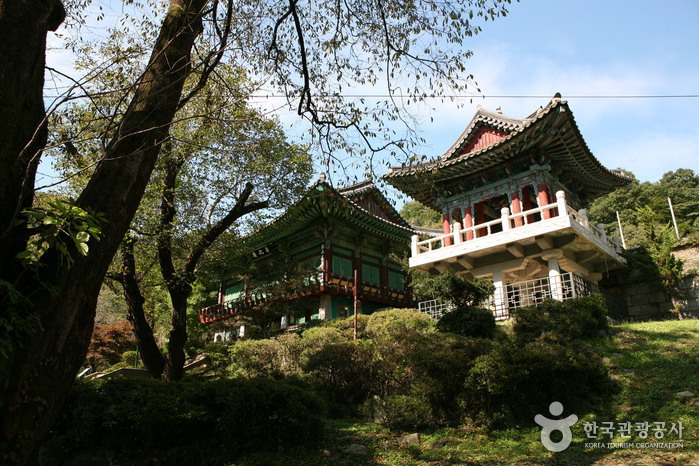Oeam Folk Village (외암민속마을)
15.7Km 2024-10-18
13-2 Oeamminsok-gil 9beon-gil, Songak-myeon, Asan-si, Chungcheongnam-do
+82-41-540-2110
Oeam Folk Village, located in Asan, boasts a history spanning over 500 years. This agricultural village has preserved its ancient houses and cultural heritage remarkably well. At the entrance, visitors are greeted by a recreation of a traditional market. The village offers Hanokstay programs, allowing guests to stay in traditional Korean houses, and provides interactive experiences that recreate traditional Korean agricultural practices and crafts.
Gravity Coffee Roasters (Sinjeonghosu Lake) (그래비티 신정호수점)
15.7Km 2024-02-21
33-42, Sinjeongho-gil, Asan-si, Chungcheongnam-do
Gravity Coffee Roasters is a large dessert café right next to Sinjeonghosu Lake. It has one underground floor and is housed on the first floor of the building, with seating on the third-floor rooftop as well. It has a great view of the lake. The rooftop is particularly popular for its open view. The café serves a variety of beverages and desserts, from coffee to latte, ade, smoothies, juice, and croffle. Concerts are sometimes held in the hall as well.
Pungduck House
15.8Km 2021-04-09
20-17, Oeamminsok-gil, Songak-myeon, Asan-si, Chungcheongnam-do
+82-41-541-0023
Pungduck Old House is located in Oeam Folk Village. The name “Pungduck (or Pungdeok)” comes from the penname of Lee Taekju, the seventh-generation descendant of historical figure Lee Sajong who earned the penname “Pungdeok” while serving as the Governor of Pungdeok-gun, Gwanghae-do. The old house is “ㅁ”-shaped, with “ㄴ”-shaped building and “ㄱ”-shaped building right over it. Behind the main building is a knoll that serves as a wall of the house. Detached buildings called “sarangchae” and “byeolchae” are used as a guesthouse where guests can experience an old traditional Korean house. The "sarangchae" with area of 40㎡ has two rooms, one living room, a kitchen, and a bathroom. There is a toenmaru (narrow wooden porch running along the outside of a room). The “byeolchae” has a large spacious room, a kitchen, and a bathroom. There is a low wooden bench called “pyeongsang” in front of the “sarangchae” and “byeolchae.” Pungduck Old House is also well-known for its traditional red chili paste, so it offers a Traditional Red Chili Paste Class where participants can buy or make their own red chili paste, soybean paste, and grain syrup using traditional recipes. There is a fee for participating in the class, so make a reservation when booking.
Solmoe Holy Ground (솔뫼성지)
16.6Km 2020-02-10
132, Solmoe-ro, Ugang-myeon, Dangjin-si, Chungcheongnam-do
+82-41-362-5021
'Solmeo' gets its name from a small cluster of pine trees. The first Korean priest, Saint Kim Dae-gun Andrea was born here on August 21, 1821 and when he was seven, he escaped persecution by following his grandfather to Handeok-dong, Yongin (Golmaemashil). Furthermore, it is where four generations of ancestors such as his great-grandfather Kim Jin-hu (martyred in 1814), great uncle Kim Han-hyun (1816), father Kim Jae-jun (1839), and priest Kim Dae-gun himself (martyred in 1846) lived.
He was chosen as a theological student in Golmaemashil and studied in Macao. In 1846, he was ordained as priest by Bishop Ferréol in Shanghai, Kim Ga Hang Cathedral. After his return to Korea, he worked in Yongin until September 1846 when he was tried, executed and died a martyr when he was only 26. Pope Johannes Paulus II appointed him a saint during his visit to Korea in May 1984. In Solmoe, Priest Kim Dae-gun’s statue and a memorial stands underneath the pine trees and his remains are placed inside the nearby cathedral.
Yugu Mural Street (유구벽화거리)
16.7Km 2024-12-24
34-5 Sijang-gil, Yugu-eup, Gongju-si, Chungcheongnam-do
Yugu Mural Street is centered around a textile factory that has operated since the 1950s. The walls surrounding the factory feature murals of elderly women weaving at looms, spinning machines, and vibrant tile mosaics. Visitors can learn about the history of the textile industry through dioramas, while the Yugu Textile History Exhibition Hall displays various weaving machines. With a traditional market nearby, it's an excellent destination for a combined tour.
Gaya Tourist Hotel (가야관광호텔)
16.8Km 2020-04-14
14, Sinpyeong 1-gil, Yesan-gun, Chungcheongnam-do
+82-41-337-0101
Gaya Tourist Hotel, located in Doeksan Provincial Park, is surrounded by the beautiful forests and clean waters of Gayasan and Doeksungsan mountains.
The hotel has cozy rooms and other convenient facilities such as a coffee shop, restaurant, fitness club, souvenir shop, and a sauna that uses natural hot springs water (45℃) from 602 meters underground. Due to its famous spa, the Gaya Tourist Hotel is a well-known tourist spot on the west coast and is mainly frequented by family visitors.
Yugu Saekdong Hydrangea Garden (유구색동수국정원)
16.8Km 2025-02-04
44 Changmal-gil, Yugu-eup, Gongju-si, Chungcheongnam-do
Stretching along a 1-kilometer riverside, Yugu Saekdong Hydrangea Garden showcases a stunning display of hydrangeas, with photo spots scattered throughout. In addition to hydrangeas, cherry trees, peonies, daffodils, and other flowers bloom year-round. During peak hydrangea season in early summer, the garden comes alive with cultural and artistic performances, including busking. Visitors can also participate in hands-on activities like making hydrangea soap, candles, and cup holders. Its proximity to Yugu Traditional Market makes it a perfect stop for a connected tour.
Cheonan Gwangdeoksa Temple (광덕사(천안))
17.1Km 2021-12-01
30, Gwangdeoksa-gil, Dongnam-gu, Cheonan-si, Chungcheongnam-do
+82-41-567-0050
Gwangdeoksa Temple is said to be established in 637 by Monk Jajang Yulsa during the Silla Kingdom and was refurbished during the reign of King Heungdeok (832). The temple sits in the southeast of Gwangdeoksan Mountain, which borders Asan-si and Cheonan-si, and the southwest of Taehwasan Mountain. It was the biggest temple within Chungcheong and Gyeonggi regions before the Japanese invasion. However, it was burnt down during the Japanese invasion and the main buildings such as Daeungjeon, Myeongbujeon and Cheonbuljeon Halls are relatively new compared to the other original facilities.
Himart - Bangchuk Branch [Tax Refund Shop] (하이마트 방축점)
17.1Km 2024-04-19
1367, Oncheon-daero, Asan-si, Chungcheongnam-do
-
Yongbongsan Mountain (용봉산)
17.1Km 2024-01-15
Sangha-ri, Hongbuk-eup, Hongseong-gun, Chungcheongnam-do
Yongbongsan Mountain is relatively small mountain, reaching a x_height of just 381 meters, but is filled with beautiful rocky outcroppings and peaks. The mountain's name comes from its ridgeline, resembling a dragon with the head of a phoenix. The mountain is home to a wide range of Korean plants, including Korean pine trees, and cultural heritages such as Yongbongsa Temple.





![Himart - Bangchuk Branch [Tax Refund Shop] (하이마트 방축점)](http://tong.visitkorea.or.kr/cms/resource/78/2883278_image2_1.jpg)
 English
English
 한국어
한국어 日本語
日本語 中文(简体)
中文(简体) Deutsch
Deutsch Français
Français Español
Español Русский
Русский